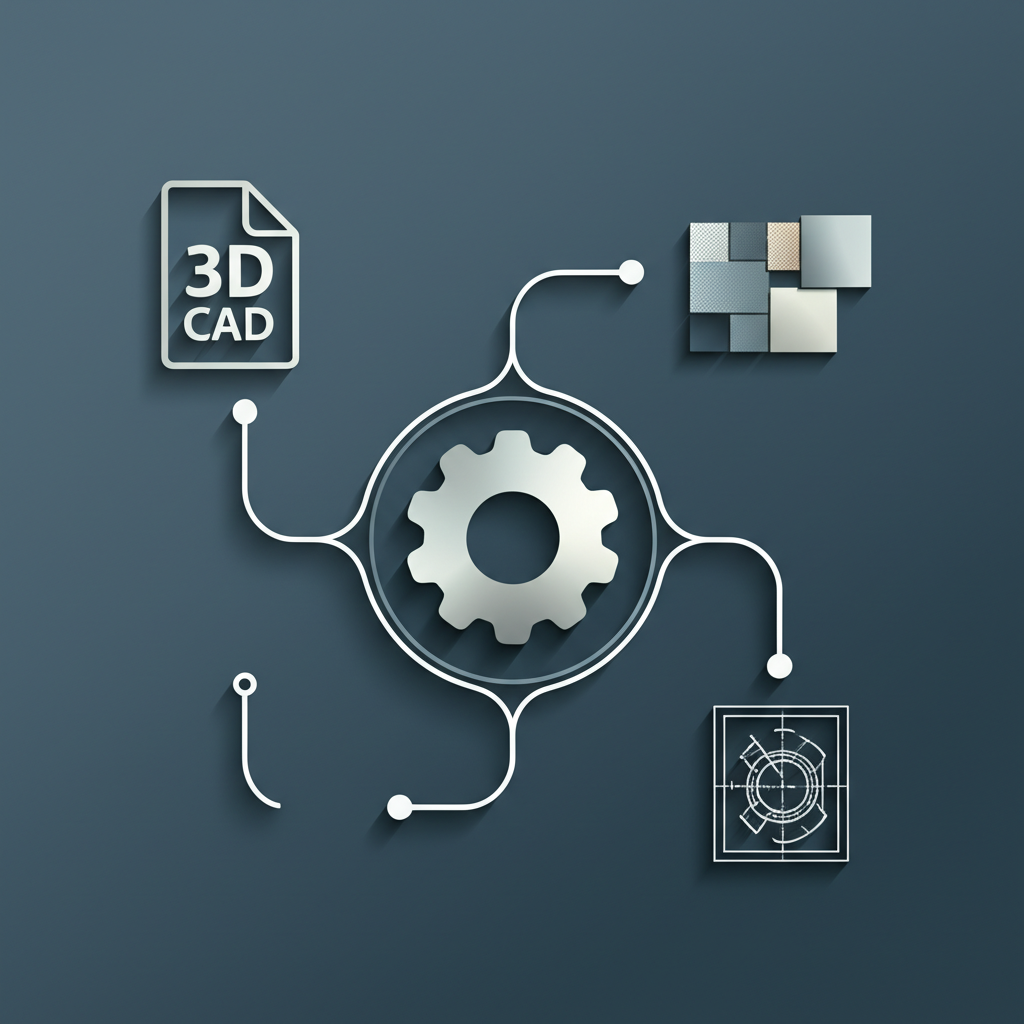From CAD to Quote: Get Your CNC Parts Priced in Minutes

TL;DR
To get a quote for CNC parts, you upload a 3D CAD file to an online manufacturer's portal. After configuring your design with details like material, quantity, and desired surface finish, you will receive an instant price and an estimated lead time for production. This process allows for rapid pricing and accelerates product development.
Preparing Your Design for a Quote: What You Need to Get Started
An accurate and fast CNC parts quote begins with proper preparation. Before you can receive pricing, you need to provide the manufacturer with a clear and complete set of instructions. Having your files and specifications in order streamlines the process, prevents errors, and ensures the quoted price reflects your actual design needs. A small amount of upfront work saves significant time and potential costs down the line.
Most online CNC services have automated platforms that analyze your design files to generate a quote. To use these systems effectively, you must provide the correct inputs. The more precise your information, the more accurate your quote will be. This preparation also forces a final review of your design, which can help catch potential issues before they become expensive manufacturing problems.
Here are the essential items you will need to get started:
- 3D CAD Model: This is the most critical component. It is a digital file that contains the three-dimensional geometry of your part. Common file formats accepted by most manufacturers include STEP, IGES, SLDPRT, and X_T. The platform will use this file to calculate machine time and material volume.
- Material Selection: You must specify the material you want your part made from. Online platforms offer a wide range of metals (like Aluminum 6061, Stainless Steel 304, Titanium) and plastics (such as ABS, Polycarbonate, PEEK). Your choice will heavily influence the cost and performance of the final part.
- Quantity: Specify how many units of the part you need. CNC machining has setup costs, so the price per part typically decreases as the order volume increases. Quoting different quantities can help you understand these economies of scale.
- Surface Finish: Indicate any required post-processing. Options can range from a standard 'as-machined' finish to bead blasting, anodizing, or powder coating. Finishes can affect a part's appearance, corrosion resistance, and surface hardness.
- 2D Technical Drawing: While not always mandatory for a basic quote, a 2D drawing is crucial for parts with specific requirements. This document should specify critical tolerances, threads, and other features that are not fully captured in the 3D model.

Step-by-Step Guide to Getting Your Instant Online CNC Quote
Once your design files are ready, obtaining a quote from an online CNC machining service is a straightforward process. These platforms are designed to be user-friendly, guiding you from file upload to final price in just a few minutes. Following these steps will help you navigate the process efficiently and confidently.
- Choose a Service Provider: The first step is to select a manufacturer that aligns with your project's needs. For projects requiring high precision and fast turnarounds, a provider like XTJ offers advanced 4 and 5-axis machining with tolerances as tight as +/- 0.005mm and lead times from three days. Other platforms such as Protolabs and Xometry also feature powerful instant quoting engines that cater to a wide range of needs. Evaluate each provider's capabilities, material selection, and lead times.
- Upload Your CAD File(s): Navigate to the provider's quoting page and upload your 3D CAD file. Most platforms feature a simple drag-and-drop interface. The system will process your file, which may take a few moments as it analyzes the part's geometry.
- Configure Your Part: After the file is analyzed, you will be prompted to configure the manufacturing specifications. This is where you will select your desired material, quantity, and surface finish from dropdown menus. You can also specify details about threads or inserts if required by your design.
- Analyze the Instant Quote: The platform will generate an instant quote based on your selections. This typically includes the unit price, total cost, and an estimated lead time. Many services also provide Design for Manufacturability (DFM) feedback. This automated analysis highlights features of your design that might be difficult or expensive to machine, offering valuable insights for cost optimization.
- Place Your Order: If you are satisfied with the quote and lead time, you can proceed to place the order directly through the platform. You will provide shipping and payment information to finalize the transaction, and your parts will be scheduled for production.
Key Factors That Influence the Cost of Your CNC Parts
Understanding what drives the cost of CNC machining can help you make informed design decisions and manage your budget effectively. The price of a custom part is not arbitrary; it is a direct result of several key factors related to materials, machine time, and labor. By optimizing these elements in your design, you can significantly reduce the final cost without compromising function.
Material Choice
The raw material is a primary cost driver. Common metals like Aluminum 6061 are relatively inexpensive and easy to machine, making them a popular choice for many applications. In contrast, harder materials like stainless steel or titanium are more expensive and require longer machining times, increasing the overall cost. High-performance plastics like PEEK are also priced at a premium. Choosing the most cost-effective material that still meets your engineering requirements is a critical step in managing expenses.
Part Complexity and Geometry
The more complex a part's geometry, the longer it takes to machine, which directly translates to higher costs. Features that increase complexity include very tight tolerances, thin walls, deep pockets, and complex curves that require 5-axis machining. Every additional setup or special tooling requirement adds to the labor and machine time. Simplifying your design by removing non-essential features and loosening tolerances where possible is one of the most effective ways to lower the price.
Order Volume (Quantity)
CNC machining involves initial setup costs for programming the machine and preparing tooling. These fixed costs are spread across the total number of parts in an order. As a result, the price per part decreases significantly as the quantity increases. A single prototype will have a high unit cost, but ordering 100 units will result in a much lower price for each part. This principle of economy of scale is crucial for production runs.
Finishing and Post-Processing
Any steps required after the initial machining will add to the final cost. This includes surface finishes like anodizing, powder coating, or electropolishing, which require additional labor and processing time. Operations such as installing threaded inserts, light assembly, or specialized inspection reports also contribute to the total price. When specifying post-processing, ensure each step is necessary for the part's function, as a basic 'as-machined' finish is the most economical option.
Evaluating Your Quote: Beyond Price and Lead Time
After you receive a quote, it can be tempting to focus solely on the price and delivery date. However, a thorough evaluation involves looking deeper to ensure you are receiving the best overall value. The cheapest or fastest option is not always the best choice, especially for critical components. Taking the time to analyze all aspects of the quote can prevent costly mistakes and ensure your parts meet their functional requirements.
A comprehensive quote from a reputable supplier contains more than just numbers; it includes valuable technical feedback and clarifies the terms of service. Understanding these details will help you compare different suppliers accurately and make an informed decision. Here are the key criteria to consider when evaluating your CNC machining quote:
- Design for Manufacturability (DFM) Feedback: Many online quoting platforms provide automated DFM analysis. This feedback is incredibly valuable, as it can identify design features that are difficult, impossible, or unnecessarily expensive to machine. Pay close attention to warnings about thin walls, deep pockets, or features that require specialized tooling. Acting on this advice can dramatically reduce costs and improve part quality.
- Quoted Lead Time Details: Clarify what the lead time includes. Does it represent the time until shipment, or the time until delivery? For urgent projects, this distinction is critical. Some services offer expedited options for a premium, while others have a standard turnaround that might be faster than a competitor's expedited service.
- Tolerance Specifications: Confirm that the supplier can meet your critical tolerances. Standard tolerances, such as those defined by ISO 2768, are typically included in the base price. If your design requires tighter tolerances, you must specify them on a 2D drawing and ensure the quote reflects this. This is a common source of error and can lead to non-conforming parts if not properly communicated.
- Supplier Reputation and Support: Investigate the manufacturer's reputation. Look for customer reviews, quality certifications (like ISO 9001), and case studies from your industry. Good customer support is also essential. A responsive engineering team that can answer your questions and provide guidance is a strong indicator of a reliable manufacturing partner.
-
Posted in
CAD design, cnc machining, custom parts, instant quote, manufacturing





